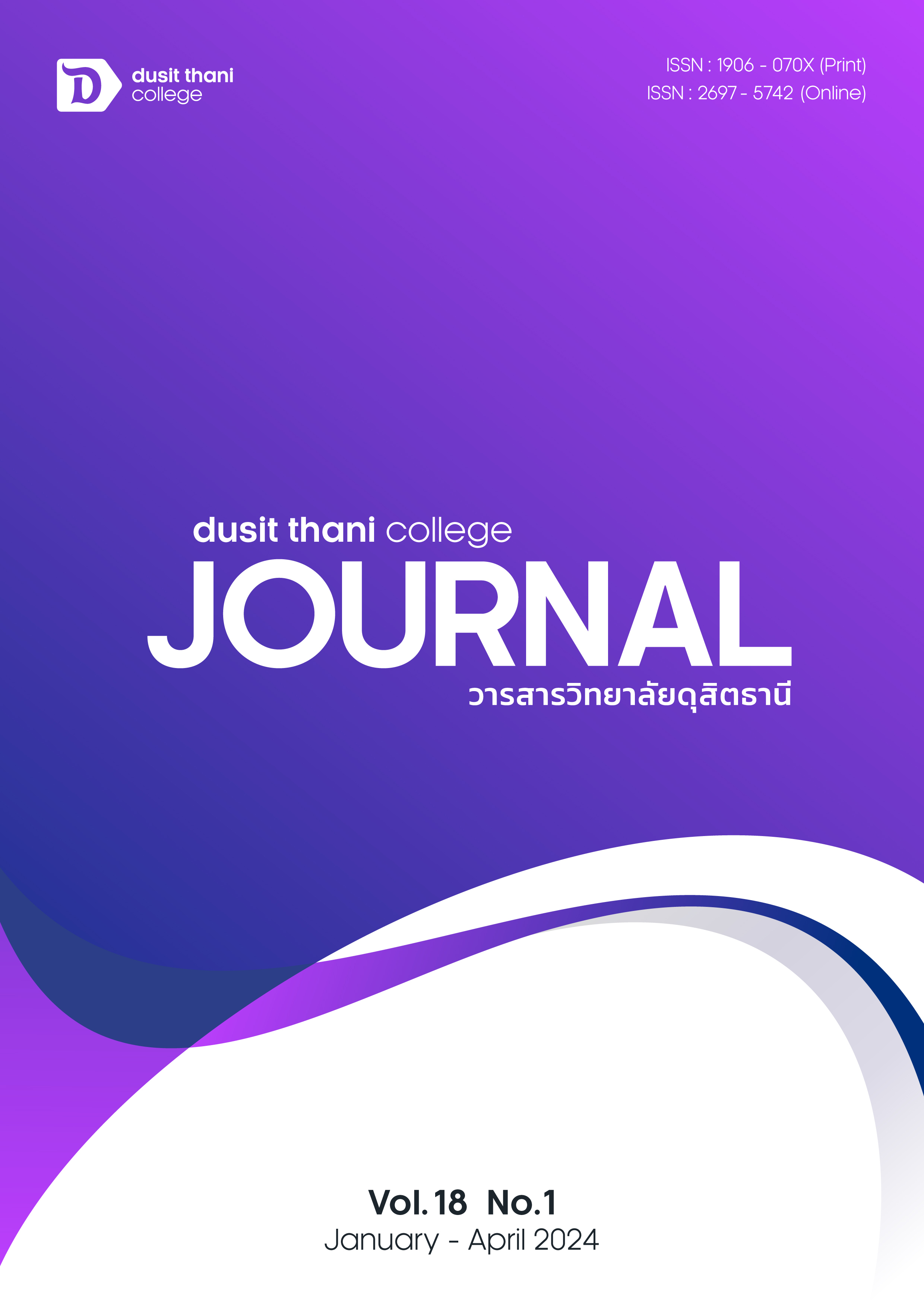Development of Prototype Cannabis Oil Bakery Product for Transferring Knowledge to Communities
Main Article Content
Abstract
This study aimed to 1) develop a cannabis oil prototype bakery product; 2) examine consumer acceptance and transfer the knowledge to the model community enterprise; and 3) examine the nutritional value of the prototype cannabis oil extract-based bakery product. The development process for the bakery product was initiated by selecting four pastries: bread, pie, Danish/croissant, and cookie, with the cookie being the highest-scored product. Cookies with cannabis oil were found to have sensing scores (appearance, texture, taste, smell, and overall) that were high in all aspects. The prototype formula number 1 had the highest average score in all aspects, but the testers gave similar scores to all three formulas without statistical significance (p>0.05). Regarding the appearance, texture, taste, smell, and overall scores, the cannabis oil cookies of all three formulas had different popularity scores with significant statistical significance (p≤0.05). Regarding nutritional value, the cookies with the formula number 1 (2.5 grams of cannabis oil for 100 grams of cookies) had a total energy of 500 kcal, 25 grams of sugar, 25 grams of fat, and 380 mg of sodium. The consumer acceptance study showed that regarding the marketing mix, the overall mean and standard deviation analysis showed the highest score (x̅ =4.68). When each aspect was analyzed, it was found that the three most important marketing mix factors were products or services (x̅ =4.92), packaging (x̅ =4.80), and place (x̅ =4.57), respectively. The price got a high score (x̅ =4.44). Regarding knowledge transfer, the attendees understood the cookie production process out of cannabis oil for developing the community enterprise. The nutritional study revealed that the 100 grams of cookies with cannabis oil had a total energy of 500 kcal, 25 grams of sugar, 25 grams of fat, and 380 mg of sodium.
Article Details

This work is licensed under a Creative Commons Attribution-NonCommercial-NoDerivatives 4.0 International License.
Article Screening Policy
- All research and academic articles to be published must be considered and screened by three peer reviews in the relevant field / article.
- All articles, texts, illustrations and tables published in the journal are the personal opinions of the authors. Editors don't always have to agree. And no responsibility whatsoever is the sole responsibility of the author.
- The articles to be published must never be published. Where did you first publish? And not in the consideration of other journals If the audit found that there has been a duplicate publication It is the sole responsibility of the author.
- Any article that the reader sees as being plagiarized or impersonated without reference. Or mislead the work of the author Please let the journal editor know it will be your greatest blessing.
References
Chaemmek, C., & Naivikul, O. (2006). Basic bakery technology. (8th ed). Bangkok: Kasetsart University.
Deeammart, J., Boonprasid, N., Yamchomsuan, C., & Thiakson, S. (2018). Nutritional supplementation using spinach powder in butter cookies. Journal of Science and Technology, Udon Thani Rajabhat University, 6(2), 43-52.
Department of Thai Traditional and Alternative Medicine. (2023). Guidance on cannabis for medical use based on traditional Thai medicine knowledge. Bangkok: Beyond Publishing.
Kertsiri, S., & Thongchew, S. (2021). Development of butter cookie with wild Melientha suavis. Vocational Education Central Region Journal, 5(2), 107-112.
Khaomouang, K., & Suteebut, N. (2020). Product development of Perilla seed cookies. In RSU National Research Conference 2020 (pp. 683-391). Rangsit University, Bangkok.
Liaotrakoon, W., & Liaotrakoon, V. (2017). Product development of bottled brine bolete of Sam Ruean subdistrict, Bang Pa-in district, Phra Nakhon Si Ayutthaya province. Journal of Community Development and Life Quality, 5(1), 174-185.
Moohammad, L., Lektrakool, K., Kadnok, N., Rerkchokdee, S., Julratee, G., Prayatyot, T., & Sangthongaram, C. (2023). Butter cookies supplemented with dragon fruit peel. Journal of Academic Science, Rajabhat University Chandrakasem, 33(1), 34-40.
Nanthachai, N., Wanmatha, P., Pathee, A & Bhuthong. N. (2015). Effects of mulberry leaf supplementation on the quality of butter cookies. Faculty of Agricultural Science, Kasetsart University 46(3), 293- 296.
Notification of the Ministry of Public Health (No. 427), B.E. 2564 2021 issued under the food Act, B.E. 2522 (1979) re: Food products containing certain part of cannabis or hemp. (2021, July 5). Thai Government Gazette. Vol. 138 Special Part 168D. pp. 22-24.
Notification of the Ministry of Public Health. Possession of narcotics of category 5, cannabis, that are consumable for treatment of diseases before Narcotics Act (No. 7) B.E. 2562. (2019, February 25). Thai Government Gazette. Vol. 136 Special Part 49D. pp. 5-6.
Patasema, S. (2023). Medical cannabis: Buddhist wisdom to disruption society. The Journal of Buddhist Innovation Review, 4(1), 13-26.
Poonnakasem, N. (2016). Development of butter cookie with fiber from pomelo albedo. SDU Research Journal Science and Technology, 9(1), 35-49.
Radapong, S., Suppajariyawat, P., & Phadungkit, M. (2021). Pharmacological and toxicological effects of cannabis. Journal of the Department of Medical Sciences, 63(1), 219-232.
Rodmui, A., & Jitwaropas, O. (2007). Production of cookies using wheat flour partial substituted with Hom Nin rice flour. Journal of Food Technology, Siam University, 3(1), 37-43.
Rossukon, J. (2022). Method for separating active substances in Kratom and cannabis [Master’s thesis]. Silpakorn University, Nakhon Pathom.
Silpcharu, T. (2006). Research and statistical data analysis with SPSS. (7th ed.). Bangkok: Business R&D.
Uttaranakorn, W., & Panthong, S. (2023). Factors influencing the decision to purchase healthy bakery in a health bakery shop in Bangkok. Suthiparithat, 37(1), 78-92.


